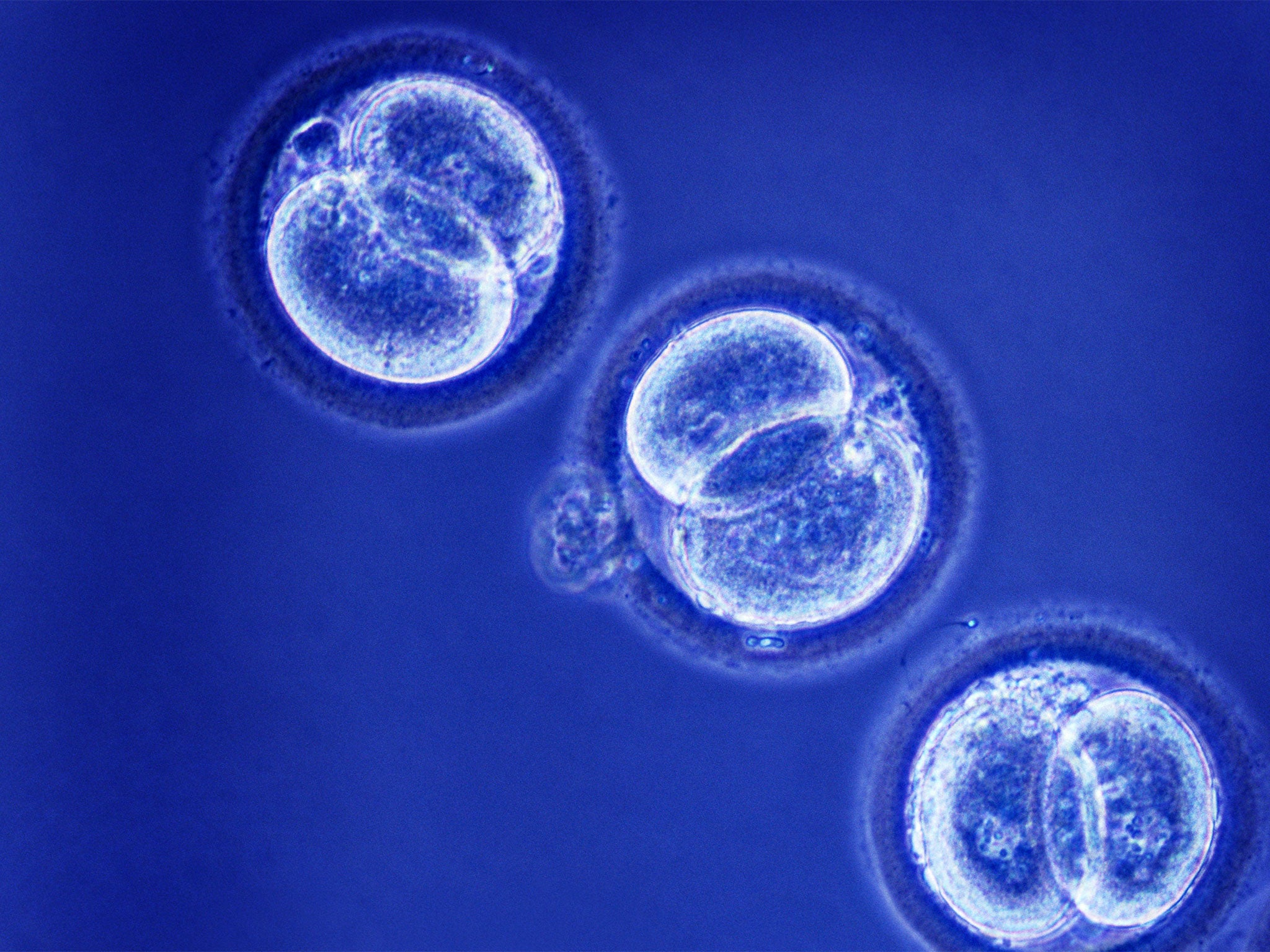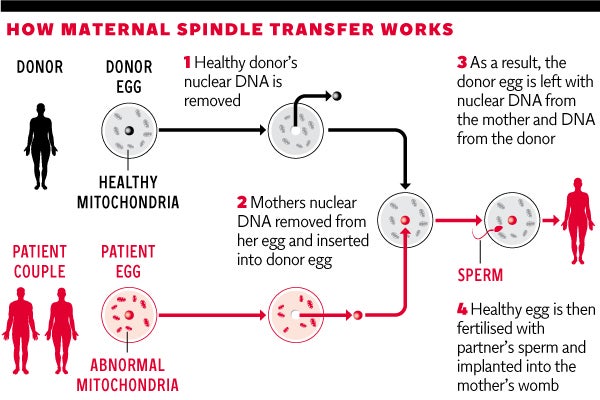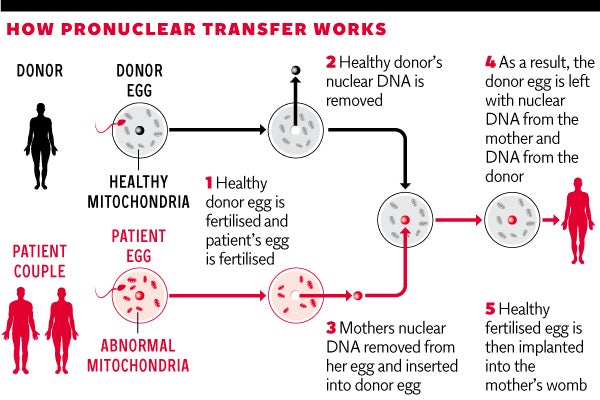'Three-parent babies': What is mitochondrial donation and what are the techniques involved?
The procedure, aimed at preventing serious inherited mitochondrial diseases, could potentially help more than 2,400 women in the UK, according to research

Your support helps us to tell the story
From reproductive rights to climate change to Big Tech, The Independent is on the ground when the story is developing. Whether it's investigating the financials of Elon Musk's pro-Trump PAC or producing our latest documentary, 'The A Word', which shines a light on the American women fighting for reproductive rights, we know how important it is to parse out the facts from the messaging.
At such a critical moment in US history, we need reporters on the ground. Your donation allows us to keep sending journalists to speak to both sides of the story.
The Independent is trusted by Americans across the entire political spectrum. And unlike many other quality news outlets, we choose not to lock Americans out of our reporting and analysis with paywalls. We believe quality journalism should be available to everyone, paid for by those who can afford it.
Your support makes all the difference.MPs have today voted in favour of Britain becoming the first country in the world to legalise the creation of IVF babies with DNA from three different people through the controversial technique of mitochondrial donation.
The procedure, aimed at preventing serious inherited mitochondrial diseases, could potentially help more than 2,400 women in the UK, according to research.
All are said to be at risk of transmitting harmful DNA mutations in the mitochondria – tiny rod-like power plants in cells – onto their children.
The process allows defective mitochodnrial DNA (mDNA) from a mother's egg to be replaced with healthy mDNA from a donor, to prevent the harmful mutations being inherited.
There are two different procedures used in mitochondrial donation – one carried out before fertilisation and the other after.

In Maternal Spindle Transfer, the nuclear DNA containing chromosomes from the mother is removed from her egg, which contains defective mitochondria, and inserted into the donor egg, which has already had the nucleus removed and contains healthy mitochondria.
The donor egg with the mother's nucleus is then fertilised with sperm from the father and inserted into the mother's womb.

The Pronuclear Transfer technique however sees the mother's egg fertilised first. Its nuclear DNA is then transferred to a fertilised donor egg, which contains the healthy mitochondria, whose own nucleus has already been removed.
The healthy fertilised egg is then implanted.
Join our commenting forum
Join thought-provoking conversations, follow other Independent readers and see their replies
Comments